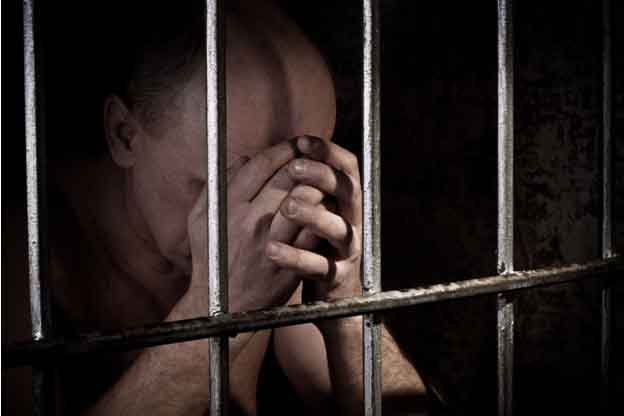Forensic Evidence: A Leap of Faith?
The general public is finally starting to understand what criminal defense attorneys have known all along: the forensic evidence used to convict people of heinous crimes is often flat-out wrong. As reported on PBS’s Frontline: The Real CSI, there have never been any rigorous national standards applied to any forensic science, except for DNA testing. Even one long-standing forensic “expert” admitted that there’s no real science at the heart of forensic interpretation. Fingerprint examiner Kenneth Moses said, “At some point, you are examining this evidence, and based on your training and experience, you make a leap of faith.”
But should our criminal justice system, which in some cases imprisons and even executes innocent people, be based on something as random and capricious as “a leap of faith”? Is that the yardstick by which we should determine who is guilty or innocent, who should live or die?
The Innocence Project does not think so. Founded in 1992 by Peter J. Neufeld and Barry Scheck, who is best known as one of the attorneys who helped secure an acquittal for O.J. Simpson, The Innocence Project is dedicated to helping exonerate through DNA testing those who have been wrongly convicted of many crimes, including capital murder.
The Innocence Project’s work underscores a frightening reality. Although the use of DNA evidence has been rigorously tested and evaluated, none of the other most common forensic techniques, such as fingerprint, hair, bite mark, and blood spatter analysis, have any established standards. As Judge Donald Shelton told PBS reporter Lowell Bergman, when it comes to fingerprint analysis, the standard “varies from laboratory to laboratory, and from witness to witness often. And some will say, “We need 16 points. No, seven.And what they all end up saying is that it’s really a matter of the individual experience and judgment of the fingerprint examiner.”
The High Cost of Bad Science
This careless approach to determining guilt or innocence has destroyed thousands of lives. Innocent people have been trapped in a haphazard legal system, a Kafkaesque nightmare from which there is no escape because the courts routinely accept an abundance of flawed forensic evidence. In fact, a 2013 study by the Associated Press revealed“at least two dozen defendants either convicted or charged with rape and murder using bite mark evidence have been exonerated since 2000.”
 Just a few stories of the way that lives have been ruined by an inappropriate reliance on sketchy forensic evidence serve as stark reminders of how easily this can happen to anyone:
Just a few stories of the way that lives have been ruined by an inappropriate reliance on sketchy forensic evidence serve as stark reminders of how easily this can happen to anyone:
- Robert Nelson spent 30 years in prison after being identified in a police line-up by a rape victim. Of his conviction, he recalled, “I couldn’t believe it, a jury found me guilty. There wasn’t even no evidence to find me guilty, so I went on to prison and tried to fight it best I could.” DNA evidence cleared his name in June 2013, but he’ll never get back the years he lost.
- Michael Morton was found guilty of murdering his wife in 1986, even though he was at work at the time of her death. Throughout the investigation, he had faith that his innocence would prevail. He said, “Innocent people think that if you just tell the truth then you’ve got nothing to fear from the police.If you just stick to it that the system will work, it’ll all come to light, everything will be fine.” But that wasn’t true, and he spent 25 years in prison before DNA evidence set him free.
- Gerard Richardson was convicted of murder in 1995 based on bite mark analysis, which The Innocence Project argues “is particularly troubling because of the almost complete absence of validated rules, regulations, or processes for accreditation that establish standards for experts or the testimony they provide.” Richardson was released in December 2013 after The Innocence Project proved that the bite mark analysis was faulty.
 Were it not for the work of criminal defense attorneys and justice advocates around the country, these innocent men would most likely have spent the rest of their lives in prison. Thankfully, there are many organizations working to make sure that wrongly convicted individuals receive better representation, rigorous advocacy, and appropriate DNA testing when required. We may not be able to give back the years, hopes, and dreams of those who have been wrongly convicted, but it is our responsibility to work toward the creation of a system in which no one else is ever subject to such injustice.
Were it not for the work of criminal defense attorneys and justice advocates around the country, these innocent men would most likely have spent the rest of their lives in prison. Thankfully, there are many organizations working to make sure that wrongly convicted individuals receive better representation, rigorous advocacy, and appropriate DNA testing when required. We may not be able to give back the years, hopes, and dreams of those who have been wrongly convicted, but it is our responsibility to work toward the creation of a system in which no one else is ever subject to such injustice.
About the Author:
Attorney Mike Schlosser represents victims of personal injury, those charged with a crime, as well as those facing traffic charges. A former Guilford County, North Carolina District Attorney, Schlosser has been in private practice at the Law Firm of Schlosser & Pritchett since 1983 and has been a member of the North Carolina State Bar since 1973.







 Blog Home
Blog Home 










